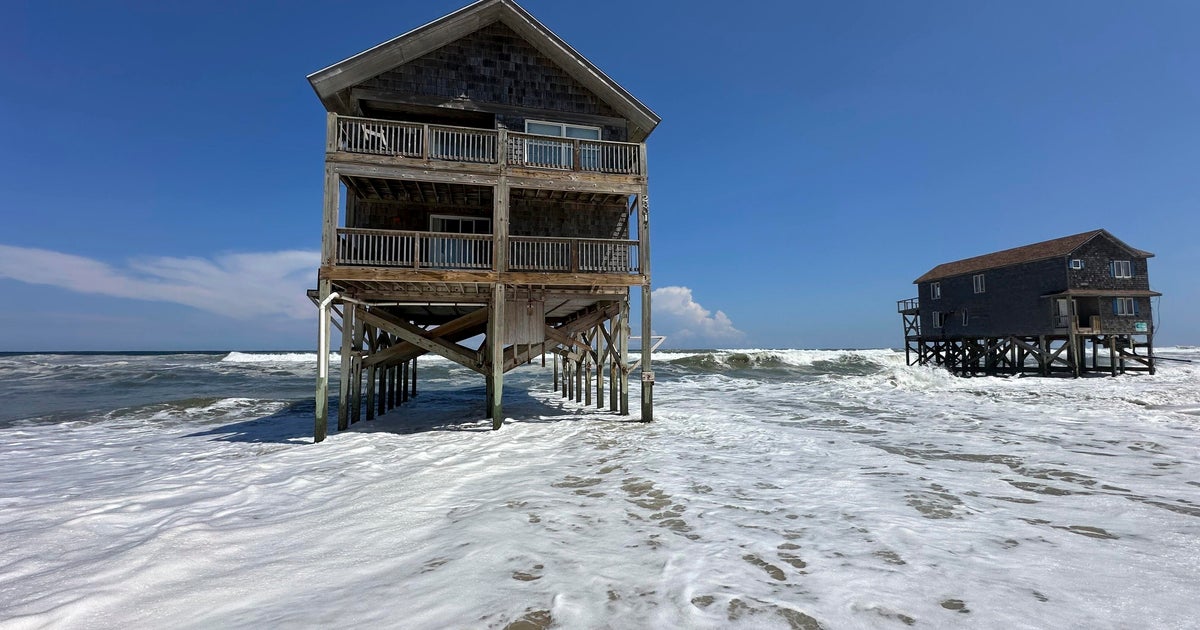
Hurricane Erin has once more proven the raw energy of nature, leaving a trail of destruction in its wake, especially along the stunning Outer Banks. This picturesque stretch of coastline, known for its idyllic beauty, has been battered via Erin's relentless high waves, inflicting considerable harm to houses. Recent photos have captured the shocking sight of homes acting on the brink of collapse, highlighting the vulnerability of these coastal groups.
The Outer Banks, a chain of barrier islands off the coast of North Carolina, is not any stranger to hurricanes. However, this year's typhoon season has been surprisingly harsh. Erin, with its fierce winds and towering waves, has examined the resilience of those groups. Many citizens have been left in awe, witnessing the sheer force of nature as houses teeter on the edge of destruction.
In recent days, pics circulating on social media and in information stores have painted a stark photo. Homes once standing proudly against the backdrop of the Atlantic Ocean now appear precariously perched, as though they could topple at any second. These visuals function a poignant reminder of the steady battle between human habitation and natural forces in coastal areas.
Local government were operating tirelessly to assess the harm and make sure the protection of citizens. Evacuations have been performed in the most susceptible regions, and emergency offerings stay on excessive alert. The safety of the network is paramount, and officers are urging residents to heed warnings and live informed because the storm progresses.
While the instant recognition is on making sure the safety of residents, the long-term implications of Hurricane Erin can't be overlooked. The damage inflicted by means of the typhoon increases critical questions on the sustainability of coastal living. With weather alternate contributing to extra common and excessive storms, coastal groups face an uncertain destiny. The undertaking of adapting to those adjustments is one so that it will require each neighborhood and international efforts.
As residents of the Outer Banks survey the harm and begin the onerous undertaking of rebuilding, there's a palpable sense of resilience. The network has weathered storms earlier than, and there is a robust dedication to recover and rebuild. However, this latest occasion serves as a stark reminder of the want for robust disaster preparedness and sustainable building practices in susceptible regions.
The pics of near-crumble houses have sparked conversations approximately the need for more potent rules and greater powerful constructing codes. As the weather maintains to change, making sure that new buildings can withstand the growing intensity of storms is essential. This isn't only a local issue however one that resonates with coastal communities international.
In the aftermath of Hurricane Erin, there may be additionally a renewed cognizance on environmental conservation. Protecting herbal obstacles together with dunes and wetlands can play a tremendous position in mitigating the impact of storms. These herbal capabilities act as buffers, absorbing the brunt of the waves and decreasing the threat of flooding and erosion.
Community leaders are emphasizing the importance of collective motion in addressing the challenges posed via climate alternate. There is a call for improved investment in infrastructure that could resist future storms and for rules that prioritize environmental sustainability. The lessons learned from Erin's effect might be critical in shaping the destiny of coastal communities.
As the Outer Banks starts the healing procedure, the resilience of its citizens shines thru. Despite the devastation, there's a robust experience of network spirit and backbone to rebuild. The journey to restoration will certainly be lengthy and tough, but with collective effort and a focal point on sustainable practices, the Outer Banks will continue to be a cherished haven alongside the Atlantic coast.










